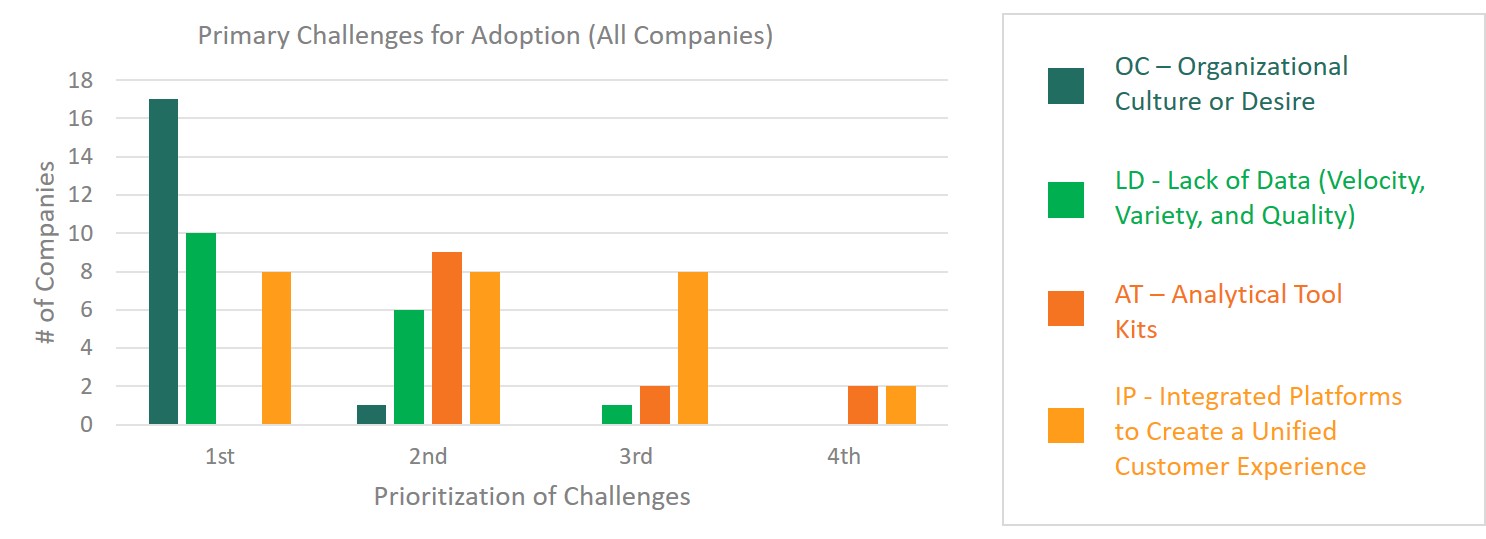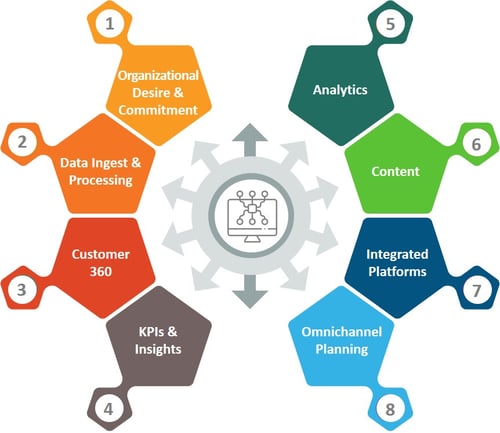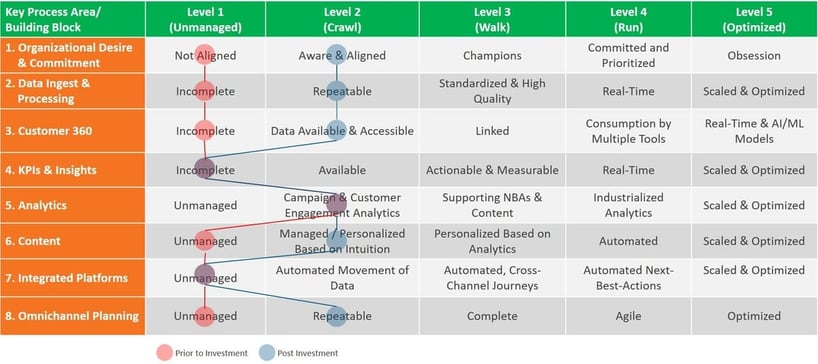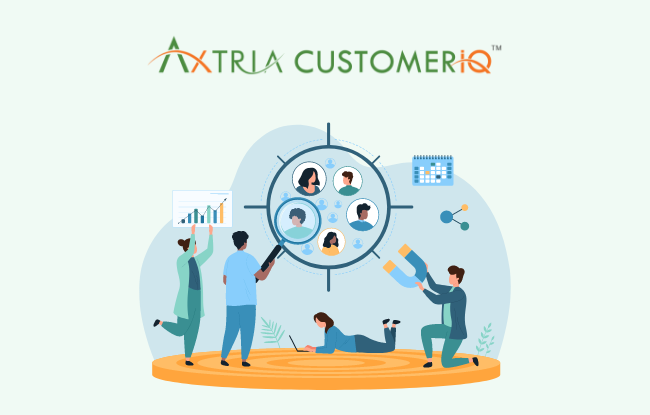Omnichannel Marketing is Widely Used With Clear Benefits and Will Become More Essential in the Months to Come
Today, omnichannel marketing is largely accepted as a necessary and effective way of marketing and selling within many industries. With the advent of the COVID-19 pandemic, social distancing, and shelter-in-place mandates, the use of digital channels has increased. In fact, online order volume from grocery merchants rose 210.1% from March 12 through March 15, 2020 compared with the same period a year earlier (per Rakuten Intelligence data).
Omnichannel marketing, which was first introduced around 2010, describes a shopping experience that engages customers across multiple touchpoints in an orchestrated and seamless way. The goal of omnichannel marketing is to provide a coordinated customer experience - one that is personalized, timely, and efficient.
![]() Watch Now - Next-Best-Actions To Enable Omnichannel Orchestration
Watch Now - Next-Best-Actions To Enable Omnichannel Orchestration
Unlike omnichannel, multichannel marketing delivers promotions and communications across several channels without considering customer interactions and preferences. To a customer, multichannel marketing can feel like they are dealing with a different company on each channel. For example, a retail sales associate does not have access to a customer’s recent online purchase while they are assisting the customer in the store. Whereas in omnichannel marketing, the sales associate can look up the customer’s online activity, preferences, purchases, etc. to more quickly offer personalized suggestions. And, in-store purchases and notes are included in the customer’s profile to serve them better online.
If history is any indicator, we expect the digital trend to continue even after the coronavirus is under control. Following the 2003 SARS epidemic in China, business-to-business e-commerce sites (such as Alibaba) and brick-and-mortar stores (such as Jing Dong Trading) transformed into some of the largest e-commerce business in the world. Following the coronavirus pandemic, Omnichannel marketing and the customer experience will be more important than ever, and marketers will need to develop no-touch customer experiences with an emphasis on hygiene.
The following proof points support the theory that a cohesive omnichannel marketing strategy can significantly increase your customer experience ratings.
- 86% of senior-level marketers agree on the importance of creating a cohesive customer journey.1
- 90% of retailers say an effective omnichannel strategy is critical or very important to their business.2
- Companies with the most robust omnichannel customer engagement strategies retain an average of 89% of their customers, as compared to 33% for companies with weak omnichannel strategies.3
Adoption Of omnichannel marketing Within Life Sciences
The adoption of omnichannel marketing within the life sciences industry has been slower, as the environment is regulated and more complicated with healthcare providers, patients, and payers playing a significant role in the purchase decision. However, pharma companies have come to recognize the value omnichannel marketing brings.
Pharma chief marketing officers (CMOs) who are not already on the omnichannel journey are interested in transitioning to this approach. And, in almost all cases, pharma CMOs are looking for ways to advance their omnichannel capabilities, leading to better and more effective customer experiences. Based on Axtria’s Omnichannel Marketing Maturity Survey4 of 35 leading pharma companies, it is apparent that omnichannel marketing has become a priority over the past two years.
- About 30% of companies surveyed have already adopted omnichannel marketing, and have deployed it in at least one franchise.
- 25% are piloting omnichannel marketing.
- The remaining 45% are in the early planning phases or have not yet started.
While CMOs in pharma are determined to enable and advance omnichannel marketing, many are finding it difficult. Of the 35 companies surveyed, most cited organizational culture as the primary challenge (as depicted in Figure 1).

Figure 1: Findings from Axtria’s Omnichannel Marketing Maturity Survey
However, based on our experience, several factors are contributing to slow progress or, in some cases, the abandonment of the omnichannel journey.
Approaches That Fall Short
Axtria has developed a maturity model (or framework) for life sciences companies looking to establish and advance omnichannel capabilities. Our framework improves the adoption of omnichannel marketing within life sciences. It helps companies realize the value while avoiding the pitfalls that can result due to slow progress, lack of organizational support, and abandonment. Before presenting our recommended approach, let’s address the top reasons companies struggle to adopt omnichannel marketing:
- Lack of senior and organizational support
Success depends on senior-level support and funding across the organization. Establishing and enabling new omnichannel capabilities requires time, money, involvement, and support from several functional areas within an organization. Not having that support will slow you down or even derail your efforts. - Overly focused on technology while ignoring other key areas
While technology is essential, not addressing the other key process areas often leads to failure along with a depleted budget. A common mistake is to address the technology requirements of omnichannel marketing without addressing people, planning, messaging, content, and analytics – all of which are critical success factors. - Not taking a phased approach
We have seen companies start with aggressive plans to enable a broad set of omnichannel capabilities. In these cases, some companies are not able to demonstrate benefits until after they have implemented excess amounts of time, money, and change management. A phased approach works better, with each phase having more reasonable goals, smaller, more incremental requests for funding, and benefits like increased lift and ROI visible early and often. An approach that works well is first to design the omnichannel journey(s) you want to enable. Then, perform a gap analysis to determine which changes are required to support this specific journey(s) and address those gaps. This approach avoids the time and expense of creating capabilities that won’t immediately be used. - Not taking a cross-functional approach
Even modest efforts to plan, execute, and measure an omnichannel campaign requires cross-functional involvement. If omnichannel marketing is new to your organization, chances are you will need to involve, train, and/or mentor individuals not currently experienced in orchestrating campaign planning and execution across all channels. For example, plan to include team members from brand marketing, marketing operations, sales, sales operations, medical, agencies, third party channel partners, etc. - Not measuring the new omnichannel capabilities
When rolling out new omnichannel capabilities, it is crucial to demonstrate the benefits. This often requires measuring omnichannel campaigns and journeys (in terms of lift and ROI), and comparing them to past/parallel run multichannel campaigns. Not taking this approach makes it more challenging to get organizational support for the changes required and to secure funding for adding new omnichannel capabilities. - Not focusing on change management
The type of omnichannel campaigns being enabled will determine the type and level of change management required to be successful. For example, omnichannel campaigns that include suggestions being pushed to the sales force should plan for a significant amount of change management. Omnichannel campaigns that only impact non-personal channels will require less.
A Roadmap for Success
Now that we have a few examples of why life sciences pharma companies struggle to establish an omnichannel strategy let’s look at a proven maturity model. Axtria’s Omnichannel Maturity Model identifies eight key process areas (KPAs) that are important for creating the omnichannel customer experience. Each KPA or building block should be considered when striving to establish or improve omnichannel capabilities. An illustration of the building blocks are shown below.

Figure 2: Axtria’s Omnichannel Maturity Model
Our recommended approach is first to define the omnichannel capabilities required to support future campaigns. Leveraging the maturity model described, create a plan considering each of the above building blocks. In most cases, it will not be necessary to address each of the eight building blocks for each iteration.
For example, a company looking to plan, execute, and measure its first omnichannel campaign would likely want to establish necessary capabilities related to: (1) organizational desire and commitment, (2) data ingest and processing, (3) customer 360, (6) content, and (8) omnichannel planning. It may not be necessary to address other areas to support a simple omnichannel campaign.
Learn More - Axtria CustomerIQTM ![]() - Omnichannel Customer Engagement
- Omnichannel Customer Engagement
See the illustration below of an organization’s maturity post-investment for executing an omnichannel campaign without using all the building blocks.

Figure 3: One Company’s Journey to Enable Their First Set of Omnichannel Campaigns
A company interested in enabling next-best-actions to push suggestions to their sales force would likely need to facilitate some level of maturity in additional areas and extend capabilities for others. For example, to enable next-best-actions for the sales force, it would be necessary to include in your plan the following:
- Create the required organizational support and alignment, with building block #1 moving to level 3 or 4.
- Plan for changes to building blocks #2 and #3 to support more real-time data and possibly additional data, moving to level 3 or 4.
- An investment in next-best-actions would typically require a level of real-time visibility into key performance indicators (KPIs), which would require changes related to building block #4.
- If next-best-actions based on analytics and/or AI/ML are required, plan for changes to building block #5 and possibly #6.
- Building block #7 would need to be addressed to enable and deliver automated next-best-actions.
Next Steps
With COVID-19 creating uncertainly and disruption in the life sciences industry, it is imperative to have a well-orchestrated omnichannel strategy. Regardless of your company’s current level of omnichannel maturity, Axtria’s Omnichannel Maturity Model will help ensure your plan is built for success.
Learn More - "50% Faster Customer Onboarding With Scalable Intelligence On Omnichannel Interactions"
Learn More - "Measuring Pharma Omnichannel Effectiveness: A Role-Driven Approach"
References:
- Salesforce.com. 2015 State of B2B Marketing – Insights from over 2,100 global marketers, published online April 28, 2015, available at: https://www.salesforce.com/form/marketingcloud/conf/2015-state-of-b2b-marketing/?conf-redirect=true
- Retail Week by Ascential. 40% of retailers not seeing omnichannel ROI, published online February 3, 2017, available at: https:// retail-week.com/topics/technology/blog-40-ofretailers-not-seeing-omnichannel-roi/7018281.article
- Digital Commerce 360. Why an omnichannel strategy matters, published online December 31, 2013, available at https://www.digitalcommerce360.com/2013/12/31/why-omnichannel-strategy-matters/
- Axtria, Inc. Axtria’s Omnichannel Marketing Maturity Survey, conducted with 35 leading pharma companies in 2019.-







.jpg?width=690&height=468&name=AI-ML-in-life-sciences%20(1).jpg)









































